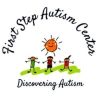Introduction: Communication lies at the heart of connection and understanding. For non-verbal autistic children, finding alternative avenues to express themselves is crucial. At First Step Autism Center, we delve into communication strategies for non-verbal autistic children that not only bridge the gap but also celebrate the unique ways in which these children can connect with the world.

Visual Supports and PECS: Visual supports, such as visual schedules and the Picture Exchange Communication System (PECS), serve as powerful tools. They provide a visual framework for daily activities and offer a means for non-verbal children to communicate their needs and preferences.
Augmentative and Alternative Communication (AAC): AAC methods, ranging from simple picture boards to sophisticated electronic devices, open up new possibilities. These tools empower non-verbal children to express themselves, fostering independence and confidence.
Sign Language and Gestures: Explore the world of sign language and gestures as a form of communication. Simple signs and gestures can become a shared language, allowing non-verbal children to convey thoughts, feelings, and desires effectively.
Social Stories and Visual Narratives: Social stories and visual narratives create a structured way to explain social situations and expectations. These tools offer non-verbal children a visual guide to navigate the complexities of social interactions and daily routines.
Sensory-Based Communication: Understanding and responding to sensory cues is a unique form of communication. Recognizing non-verbal signals related to comfort, discomfort, or preferences provides valuable insights into a child’s emotional and physical state.
Developing a Communication Passport: Collaborate with educators and therapists to create a communication passport. This personalized document outlines an individual’s communication preferences, ensuring a consistent and supportive approach across various settings.
Encouraging Use of Technology: Embrace technology as a communication ally. Tablets and communication apps can provide a dynamic platform for non-verbal children to express themselves, fostering engagement and interactive learning.
Interactive Play and Turn-Taking: Communication extends beyond words. Encourage interactive play and turn-taking activities, promoting non-verbal communication through shared experiences and gestures.
Creating a Supportive Environment: Foster a supportive environment where non-verbal children feel encouraged to communicate. Patience, active listening, and a commitment to understanding non-verbal cues contribute to building a trusting and communicative relationship.
Conclusion: Communication is a diverse and dynamic journey for non-verbal autistic children. First Step Autism Center stands alongside parents and educators, offering resources and guidance to unlock the unique ways in which these children express themselves and connect with the world.

